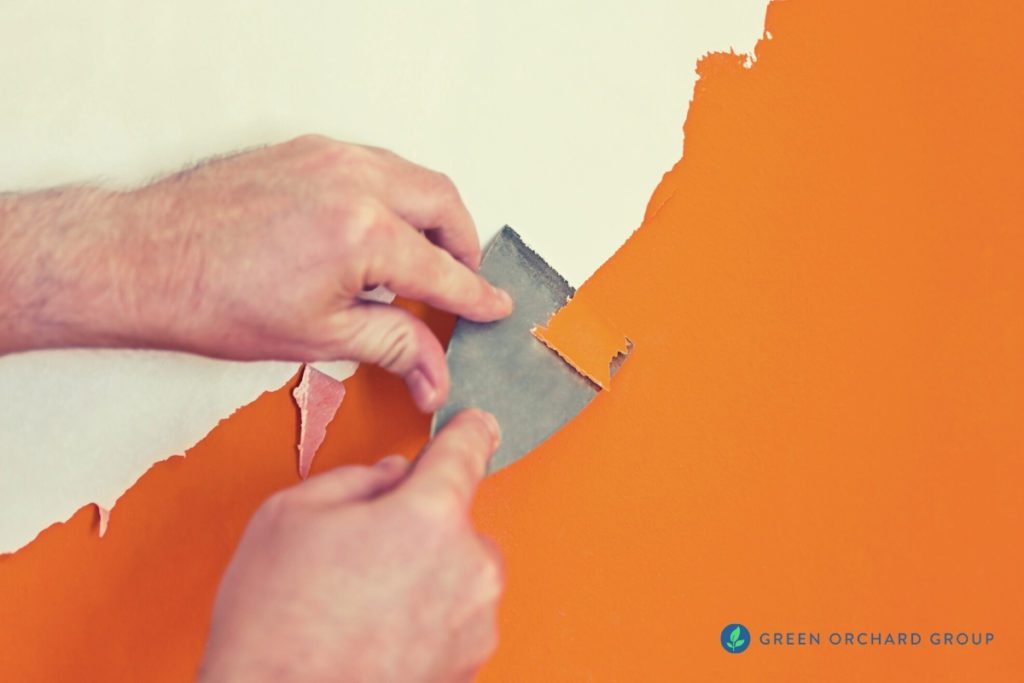
Under New York City’s lead paint rules (Local Law 1), landlords are responsible for identifying and remediating lead paint hazards.
When a tenant is concerned about lead paint in an apartment in New York City, is the landlord immediately responsible for removing the lead paint?
“Lead Paint” versus “Lead Paint Hazard”
According to the EPA, lead paint is normally not dangerous if it is in good condition.
Only when lead paint starts to deteriorate — e.g. peeling, chipping, chalking, cracking, or damaged in any way — does it present a danger to people nearby. At this point, it can be classified as a lead paint hazard.
This is a very important distinction when it comes to understanding your situation. In New York City, as well as under federal law, landlords are not required to remove or remediate lead-based paint unless it’s hazardous.

Paint that’s not deteriorating can also be considered lead paint hazards when it covers certain high-risk surfaces that are either (1) susceptible to wear-and-tear from rubbing, friction, impact, and heat or (2) likely for children to chew on or come into frequent contact with.
Examples of high-risk surfaces include:
- Floors
- Windows, window sills, and window wells
- Doors and door frames
- Stairways, railings, and bannisters
- Porches
- Cabinets
If a tenant is concerned about lead paint that either shows signs of deterioration or is on a high-risk surface, the landlord may be required to take action to remove the lead paint hazard (see next section).
If the lead paint is in good condition and not on a high-risk surface (e.g. NOT a “lead paint hazard”), no action is required from the landlord.
When Are Landlords Required to Remove Lead Paint?
Per Local Law 1 of 2004 and its amendments, landlords must identify and remediate lead paint hazards when both of the following conditions are met:
1. The building was built before 1960, or it was built between 1960-1978 and is known to have lead paint.
Older buildings in New York City that were constructed before lead paint was banned in 1960 are presumed to contain lead-based paint. As such, any deteriorating paint is considered a lead paint hazard unless it has been tested negative for lead.
Some developers continued to use lead-based paint until it was banned federally in 1978, so certain buildings built between 1960 and 1978 are also subject to Local Law 1 requirements if the owner knows that lead-based paint is present.
2. A child under 6 years old spends 10 or more hours per week in the apartment, or the apartment is vacant (turnover).
According to Local Law 1, landlords have to remove lead paint hazards if a child under 6 resides in the apartment. That’s because lead poisoning is particularly dangerous for young children, leading to serious problems with growth and development.
If the landlord does not remediate the lead paint hazard in a safe and timely manner, the tenant may call 311 to file a complaint with HPD, which will investigate and issue violations if warranted.
If a lead paint hazard is found in an apartment without a child under 6, the landlord is not required to remove the hazard until after the tenant moves out (during turnover). Once the apartment is vacated, regardless of whether young children were there, the landlord must remediate all lead paint hazards as well as any underlying defects that cause paint to deteriorate before a new tenant moves in.

How Do You Remove Lead Paint?
In New York City, lead paint hazards can be safely addressed using 3 methods:
- Removal or Replacement
- Containment (also called “Enclosure”)
- Encapsulation.
Removal means getting rid of the lead paint permanently, using safe methods such as chemical stripping (must not contain methylene chloride), heat guns (must be operated below 1100 °F), or power sanding (with a HEPA dust collector).
Replacement is similar to removal but instead of removing the paint only, you’re replacing an entire surface component (strongly recommended for windows and doors).
Containment, or enclosure, refers to the installation of a rigid barrier to seal off a lead-painted surface. The rigid barrier, which is often composed of a hard material such as sheetrock or paneling, prevents direct exposure to the lead paint and stops dust and fumes from escaping.
Encapsulation involves covering lead-painted surfaces with a special type of liquid or adhesive called an encapsulant. Similar to containment, the encapsulant is designed to seal the painted surface and prevent it from releasing lead dust or paint chips.
Can Landlords Remove Lead Paint by Themselves?
In most cases, if the amount of deteriorating lead paint is small (under 100 square feet, it is up to the landlord to either hire a professional lead abatement firm or remove the lead paint by themselves (if they’re properly trained).
Specific instances where hiring an EPA-certified lead abatement company is required include:
- Whenever the total amount of lead paint being disurbed is more than 100 square feet
- When replacing windows
- When fixing violations issued by the NYC Department of Housing Preservation and Development (HPD)
- When applying for an HPD Lead Free or Lead Safe exemption
Any other time, including when doing general repair work that disturbs presumed or confirmed lead paint, landlords must use trained works following safe work practices.
This includes clearing and sealing off the area with tape and plastic, using wet mops or HEPA vacuums to clean the work area, and hiring a certified lead inspector to perform clearance dust wipes after the work has been completed.

EPA-Certified Lead Inspection & Abatement in NYC
Green Orchard Group is a leading environmental services company based in New York City with over 25 years of experience specializing in lead inspection and abatement services.
Whether you need XRF lead inspections, lead abatement services, or clearance dust wipes, you can count on our EPA-certified lead experts to provide high-quality services that are fully compliant with local and federal regulations.
